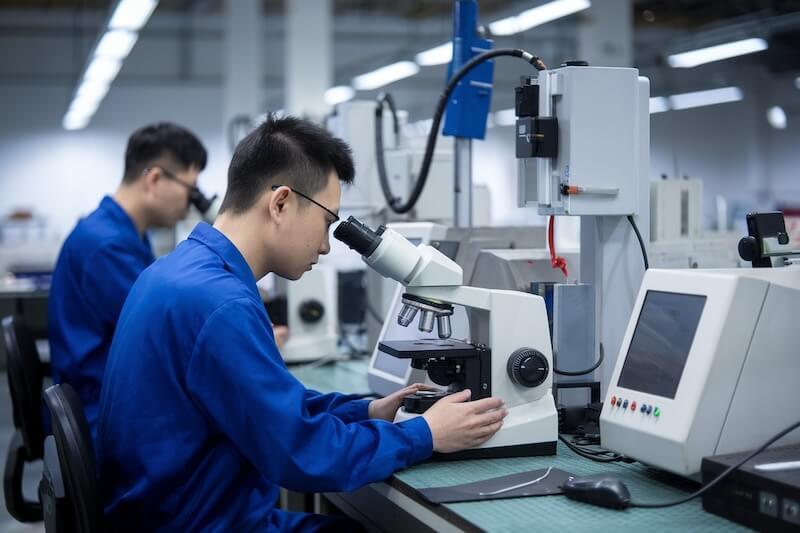Introduction
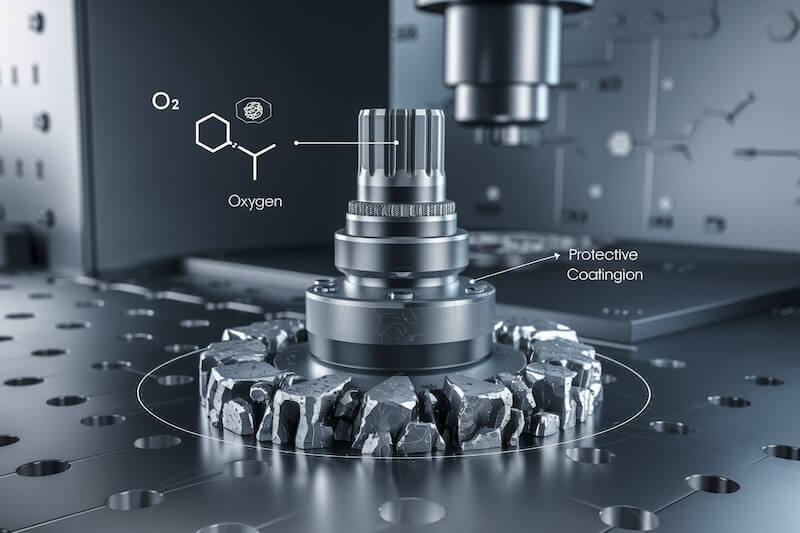
In the realm of advanced materials, chemical stability is a pivotal property that determines a material’s longevity, performance, and suitability for various industrial applications. In the tungsten carbide (WC) industry, chemical stability plays a crucial role in ensuring that components maintain their integrity and functionality under harsh chemical and environmental conditions. Tungsten carbide is renowned for its exceptional hardness, wear resistance, and high melting point, making it indispensable in sectors such as mining, aerospace, manufacturing, and automotive industries. This article delves into the concept of chemical stability in tungsten carbide, exploring its significance, underlying mechanisms, factors affecting it, methods to enhance it, and its impact on various applications.
What is Chemical Stability?
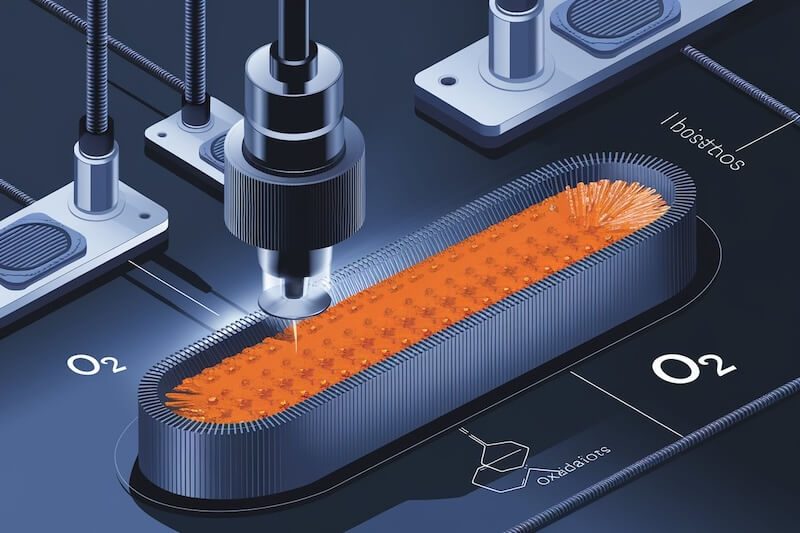
Chemical stability refers to a material’s ability to resist chemical reactions that can alter its structure, composition, or properties when exposed to different chemical environments. In simpler terms, a chemically stable material does not easily degrade, corrode, or react with substances it comes into contact with, such as acids, bases, salts, or oxidizing agents. For tungsten carbide, chemical stability is essential to maintain its remarkable hardness and wear resistance over time, especially in applications where the material is subjected to corrosive chemicals or extreme environmental conditions.
Why is Chemical Stability Important for Tungsten Carbide?
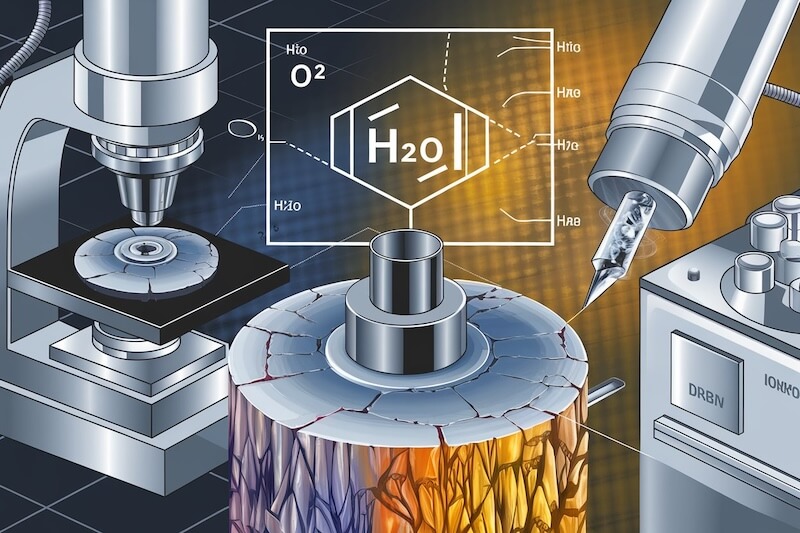
Tungsten carbide is widely used in applications that demand high performance and durability. Chemical stability is critical for several reasons:
Longevity and Durability
Components made from tungsten carbide are expected to perform reliably over extended periods. Chemical stability ensures that these components do not degrade or lose their structural integrity when exposed to harsh chemicals or environments, thereby extending their lifespan.
Performance Consistency
In applications such as cutting tools, mining equipment, and aerospace components, consistent performance is paramount. Chemical degradation can lead to reduced hardness, increased wear, and eventual failure, compromising the efficiency and safety of operations.
Cost Efficiency
Enhancing the chemical stability of tungsten carbide components reduces the need for frequent replacements and maintenance, leading to significant cost savings for industries that rely on these materials.
Safety
In critical applications, the failure of tungsten carbide components can pose safety risks. Chemical stability helps prevent unexpected failures, ensuring the safety of operations and personnel.
Factors Affecting Chemical Stability in Tungsten Carbide
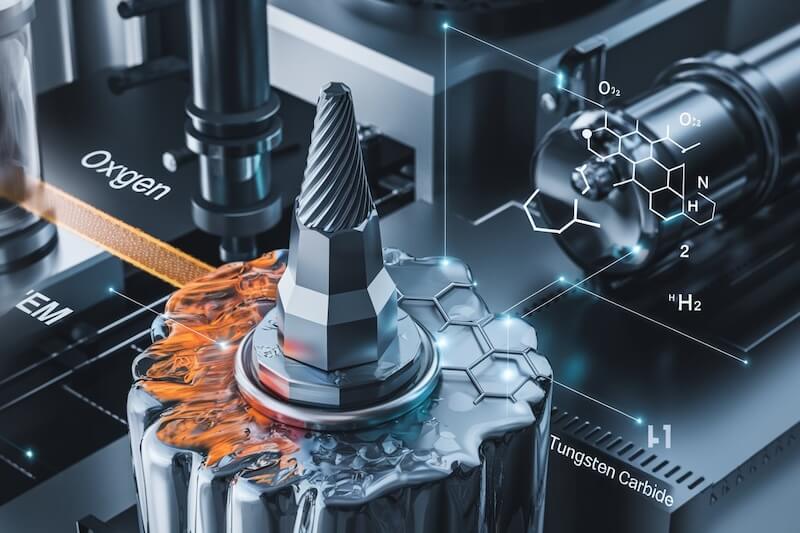
Several factors influence the chemical stability of tungsten carbide:
Composition and Binder Materials
Tungsten Carbide (WC): The primary component, WC, is inherently resistant to wear and high temperatures. However, its chemical stability can be influenced by the presence of impurities or secondary phases.
Binder Materials
Common binders include cobalt (Co) and nickel (Ni). While cobalt enhances toughness, it is more susceptible to oxidation compared to nickel, which offers superior corrosion resistance. The choice and proportion of binder material significantly impact the overall chemical stability of tungsten carbide.
Sintering Process
The sintering process involves heating the tungsten carbide and binder mixture to high temperatures to bond the particles together. Proper control of sintering temperature, time, and atmosphere is crucial to minimize porosity and prevent the formation of unwanted phases that can reduce chemical stability.
Grain Size and Microstructure
Finer grain sizes generally enhance chemical stability by providing a more uniform microstructure, reducing the likelihood of localized corrosion. Grain boundaries can act as sites for chemical reactions, so minimizing their number and optimizing their distribution can improve stability.
Environmental Conditions
Exposure to corrosive agents such as acids, bases, and salts can challenge the chemical stability of tungsten carbide. High temperatures and humidity levels can exacerbate these effects, leading to accelerated degradation if the material is not adequately protected.
Surface Treatments and Coatings
Applying protective coatings, such as chromium nitride (CrN) or titanium nitride (TiN), can enhance the chemical stability of tungsten carbide by forming a barrier against corrosive substances. Surface treatments like passivation can also improve resistance to oxidation.
Measuring Chemical Stability in Tungsten Carbide
Assessing the chemical stability of tungsten carbide involves various testing methods to evaluate its resistance to chemical reactions and degradation:
Salt Spray Testing
This standardized test exposes tungsten carbide samples to a salt-laden mist to simulate marine or humid environments. The duration until visible corrosion appears indicates the material’s resistance to salt-induced degradation.
Thermogravimetric Analysis (TGA)
TGA measures the change in weight of a tungsten carbide sample as it is heated in an oxygen-rich atmosphere. The rate of weight gain due to oxidation provides insights into the material’s thermal stability and resistance to oxidation.
Immersion Testing
Samples are immersed in various corrosive solutions, such as acids or bases, for extended periods. Post-immersion examination reveals any signs of chemical degradation, such as pitting, cracking, or oxide formation.
Electrochemical Testing
Techniques like potentiodynamic polarization and electrochemical impedance spectroscopy (EIS) assess the corrosion behavior of tungsten carbide in specific electrolytes. These methods help determine the corrosion rate and passivation characteristics.
Scanning Electron Microscopy (SEM) with Energy-Dispersive X-ray
Spectroscopy (EDS)
SEM provides high-resolution images of the material’s surface, while EDS identifies the elemental composition of any corrosion products. This combination allows for detailed analysis of the corrosion mechanisms and the extent of chemical degradation.
Enhancing Chemical Stability in Tungsten Carbide
Manufacturers employ several strategies to improve the chemical stability of tungsten carbide:
Optimizing Binder Composition
Selecting binder materials with higher corrosion resistance, such as nickel, can enhance the overall chemical stability of tungsten carbide. Alloying cobalt with nickel can balance toughness and corrosion resistance.
Refining Sintering Processes
Precise control over sintering parameters ensures complete densification and minimizes porosity, reducing the material’s susceptibility to chemical attack. Sintering in a controlled atmosphere, such as hydrogen or vacuum, prevents oxidation during the process.
Applying Protective Coatings
Coatings like chromium nitride, titanium nitride, or aluminum oxide can form protective barriers that shield tungsten carbide from corrosive agents. These coatings also enhance surface hardness and wear resistance.
Incorporating Alloying Elements
Adding elements such as chromium, molybdenum, or titanium can improve the chemical stability of tungsten carbide by forming stable carbide phases that resist oxidation and corrosion.
Surface Treatments
Processes like passivation involve treating the surface to create a protective oxide layer that inhibits further chemical reactions. This enhances resistance to oxidation and other corrosive processes.
Improving Grain Size Control
Maintaining a fine and uniform grain size helps reduce the number of grain boundaries, which are potential sites for corrosion. Advanced milling and sintering techniques can achieve this microstructural control.
Applications Influenced by Chemical Stability
The chemical stability of tungsten carbide determines its suitability for various high-performance applications:
Cutting Tools
Tungsten carbide is extensively used in cutting tools for machining operations. Chemical stability ensures that these tools maintain their sharpness and resist wear even when cutting through chemically aggressive materials.
Mining and Drilling Equipment
Mining tools like drill bits and wear parts operate in environments with exposure to water, acids, and abrasive materials. High chemical stability prevents premature wear and extends the service life of these tools.
Aerospace Components
In aerospace applications, tungsten carbide components such as turbine blades and high-temperature seals must withstand extreme temperatures and corrosive atmospheres. Chemical stability ensures reliable performance and structural integrity.
Chemical Processing Equipment
Pumps, valves, and nozzles used in chemical plants are exposed to corrosive chemicals. Tungsten carbide’s chemical stability enhances the durability and efficiency of these components, reducing downtime and maintenance costs.
Automotive Parts
High-performance automotive components, such as valves and turbocharger parts, benefit from tungsten carbide’s chemical stability, ensuring they withstand exposure to oils, fuels, and high temperatures without degradation.
Conclusion
Chemical stability is a fundamental property that enhances the performance, durability, and reliability of tungsten carbide across a wide range of industrial applications. By resisting chemical reactions such as oxidation and corrosion, tungsten carbide maintains its exceptional hardness and wear resistance, ensuring long-term functionality even in the most challenging environments.
Understanding and optimizing chemical stability through careful selection of binder materials, refining manufacturing processes, applying protective coatings, and controlling grain size are essential for maximizing the benefits of tungsten carbide. As industries continue to demand higher performance and longer-lasting materials, the role of chemical stability in tungsten carbide remains a cornerstone of its industrial excellence.

